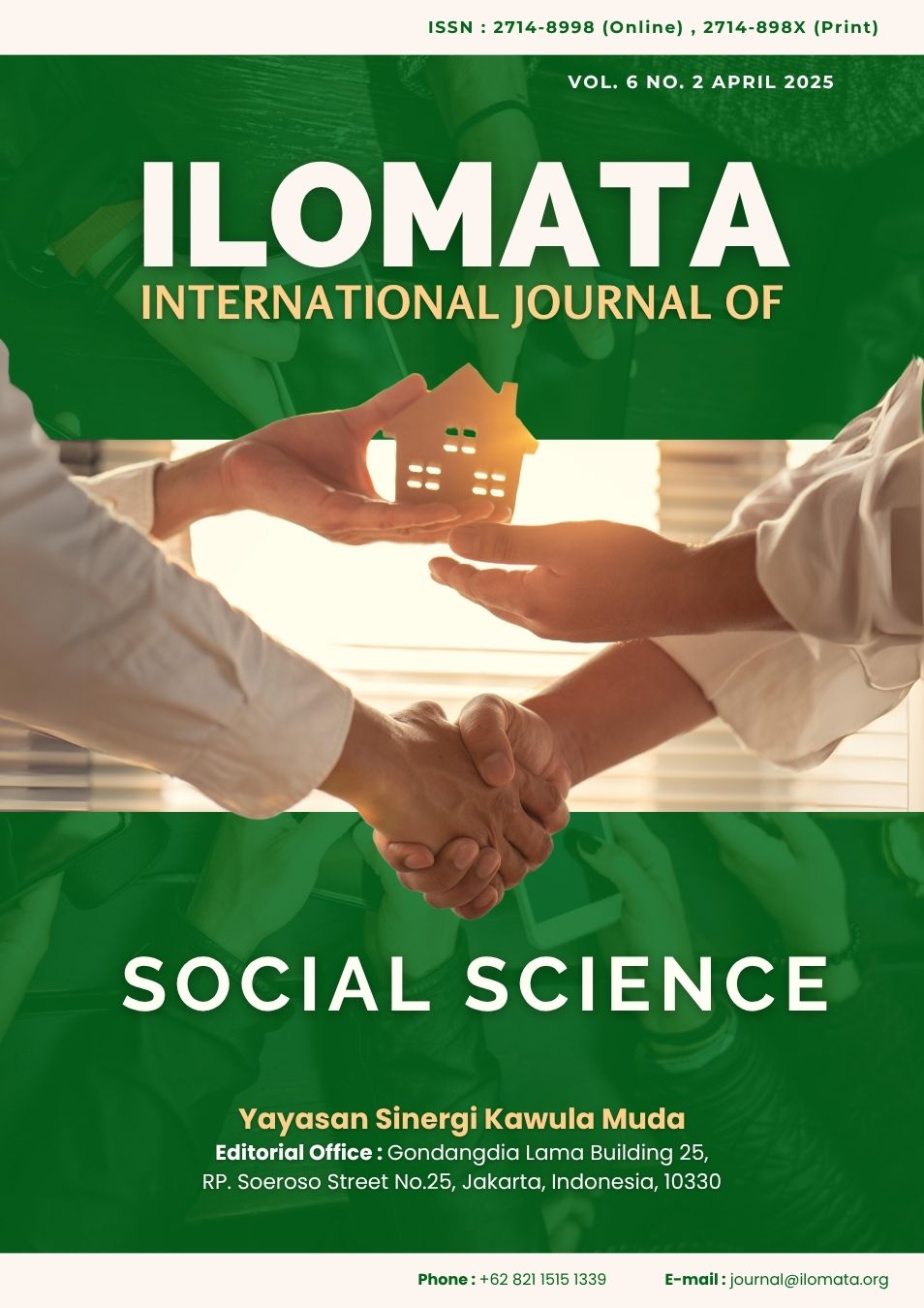Main Article Content
Abstract
As globalization continues to reshape the landscape of higher education, international student mobility has become increasingly prevalent. In this context, the potential of Indonesian higher education institutions (HEIs) in accommodating Vietnamese students still needs to be explored. This research delves into the prospects of Indonesian higher education for Vietnamese students, examining factors such as academic offerings, a strong cultural affinity between the two countries, language proficiency, and institutional collaborations. Through qualitative analysis of existing policies, student experiences, and academic partnerships, this study sheds light on the untapped opportunities and challenges in fostering educational exchanges between Indonesia and Vietnam. The findings suggest that Indonesian HEIs possess significant potential to attract Vietnamese students, offering diverse academic programs, affordable tuition, and a culturally enriching environment that resonates with Vietnamese students. However, language barriers, administrative hurdles, and limited awareness hinder realizing this potential. It is of utmost importance for policymakers, academic institutions, and stakeholders to urgently implement the recommendations provided in this research, thereby enhancing the accessibility and appeal of Indonesian higher education for Vietnamese students and fostering cross-cultural understanding and educational excellence in the region.
Keywords
Indonesia
Higher education
Vietnamese student
Indonesian language
Article Details

This work is licensed under a Creative Commons Attribution 4.0 International License.
How to Cite
Nguyen, M. T. (2025). Unlocking Opportunities: Exploring The Future Potential Of Indonesian Higher Education For Vietnamese Students. Ilomata International Journal of Social Science, 6(2), 488-504. https://doi.org/10.61194/ijss.v6i2.1616
References
- Agustian, S. (2019). Internationalization of Indonesian Higher Education: Recent Initiatives and their Problems. International Higher Education, 97, 12–13.
- Almanwari, H. S. A., Md Saad, N. H., & Zainal, S. R. M. (2024). The influence of environment and location, personal motivation, and fee and price on satisfaction, attitude, and behavioral loyalty among international students in Oman. Journal of Open Innovation: Technology, Market, and Complexity, 10(2), 100285. https://doi.org/10.1016/J.JOITMC.2024.100285
- Asian Development Bank. (2015). Education in Indonesia. OECD. https://doi.org/10.1787/9789264230750-en
- Baihaqi, D. H. (2024). The Implementation of Darmasiswa Scholarship as the Means of Indonesia Public Diplomacy in 2011 To 2019 [Undergraduate, Universitas Islam Indonesia]. https://dspace.uii.ac.id/handle/123456789/49282
- Bhandari, R., & Blumenthal, P. (2011). Global Student Mobility and the Twenty-First Century Silk Road: National Trends and New Directions. In International and Development Education (pp. 1–23). Palgrave Macmillan, New York. https://doi.org/10.1057/9780230117143_1
- Brilyanti, F. A. (2021). Nation Branding Through KNB Scholarship as Soft Power Diplomacy. Dinasti International Journal of Education Management And Social Science, 2(5), 756–762. https://doi.org/10.31933/DIJEMSS.V2I5.850
- Broto Legowo, M., Indiarto, B., & Prayitno, D. (2020). A Unified Model of Quality Assurance System for ISO-Certified Higher Education Institutions. International Journal for Quality Research, 14(3), 829–846. https://doi.org/10.24874/IJQR14.03-12
- C.J. Auriacombe, J. Mouton. (2007). Qualitative field research. 42(6), 441-457.
- Darmadji, A., Prasojo, L. D., Kusumaningrum, F. A., & Andriansyah, Y. (2018). Research Productivity and International Collaboration of Top Indonesian Universities. Current Science, 115(4), 653. https://doi.org/10.18520/cs/v115/i4/653-658
- Fitria, T. N. (2023). Introducing Bahasa Indonesia bagi Penutur Asing (BIPA): Method and challenges of teaching Indonesian as a Foreign Language (IFL). Inovasi Kurikulum, 20(2), 205–224. https://doi.org/10.17509/JIK.V20I2.60374
- Green, W., & Baxter, A. (2023). Engaging Students as Partners in International Education. In The Handbook of International Higher Education: Second Edition (2nd ed., pp. 306–324). Taylor and Francis. https://doi.org/10.4324/9781003447863-19/ENGAGING-STUDENTS-PARTNERS-INTERNATIONAL-EDUCATION-WENDY-GREEN-ARYN-BAXTER
- Indonesian Ministry of Education and Culture. (2024). KNB Scholarship Indonesia. https://knb.kemdikbud.go.id/
- Irianto, S. (2021). Legal Education for The Future of Indonesia: A Critical Assessment. The Indonesian Journal of Socio-Legal Studies, 1(1), 1. https://doi.org/10.54828/ijsls.2021v1n1.1
- Lambey, L., Jeini Usoh, E., Lambey, R., & Burgess, J. (2024). Challenges and Opportunities to Internationalize the Indonesian Higher Education Sector. In International Business - New Insights on Changing Scenarios. https://doi.org/10.5772/intechopen.110658
- Lee, M. N. N. (2007). Higher Education in Southeast Asia in the Era of Globalization. Springer International Handbooks of Education, 18, 539–555. https://doi.org/10.1007/978-1-4020-4012-2_27
- Lopez, L. G. M. (2019). The Indonesian language and its potential to become an international language. Proceedings of the Third International Conference of Arts, Language and Culture (ICALC 2018). https://doi.org/10.2991/icalc-18.2019.40
- Indonesian Ministry of Education and Culture. (2024). Darmasiswa: Indonesian Scholarship. https://darmasiswa.kemdikbud.go.id/
- Mary Caplan, Gregory Larkin Purser. (2019). Qualitative inquiry using social media: A field-tested example. Qualitative Social Work, 18(3), 417-435. doi:10.1177/1473325017725802
- Mok, K. H. (2022). The COVID-19 Pandemic and International Higher Education in East Asia. In Simon Marginson & Xin Xu (Eds.), Changing Higher Education in East Asia (pp. 225–246). Bloomsbury Academic. https://scholars.ln.edu.hk/en/publications/the-covid-19-pandemic-and-international-higher-education-in-east-
- Nguyen, M. T. (2023). Impact the Pursuit of Global Education among Vietnamese Students: Finding and Discussion. JURNAL AL-QALAM: JURNAL KEPENDIDIKAN, 24(2), 30–43. https://doi.org/10.32699/AL-QALAM.V24I2.6432
- Rosser, A. (2023). Higher Education in Indonesia: The Political Economy of Institution-Level Governance. Journal of Contemporary Asia, 53(1), 53–78. https://doi.org/10.1080/00472336.2021.2010120
- Sadiq, N. (2022). Teachers’ Use of English and Other Languages in the English-Medium Instruction (EMI) Settings in Indonesian Universities [Doctoral]. University of Southampton.
- Sibawaihi, S., & Fernandes, V. (2023). Globalizing higher education through internationalization and multiculturalism: The case of Indonesia. Higher Education Quarterly, 77(2), 232–245. https://doi.org/10.1111/hequ.12391
- Shayne, J. (2010). Qualitative Field Methods.
- Soysal, Y. N., Baltaru, R., & Cebolla-Boado, H. (2020). Meritocracy or Reputation? How University Rankings Matter. https://doi.org/10.31235/OSF.IO/F6BY3
- Thabata Cristy Zermiani, Rosane Souza Freitas, Rafael Gomes Ditterich, Rubia Carla Formighieri Giordani. (2021). Discurso do Sujeito Coletivo e Análise de Conteúdo na abordagem qualitativa em Saúde. Research, Society and Development, 10(1). doi:10.33448/RSD-V10I1.12098
- Thu T., D., & Duy N., P. (2014). Academic mobility in South East Asia: Challenges and opportunities in the coming decades. International Education, 44(1), 28–49.
- Tri, N. M. (2024). Unraveling the dynamics of intercultural communication and adaptation process in multicultural settings. Metahumaniora, 14(1), 54. https://doi.org/10.24198/metahumaniora.v14i1.51757
- Umesh Kemparaj, Sangeeta Chavan. (2013). Qualitative research: a brief description. Indian Journal of Medical Sciences, 67(3), 89-98. doi:10.4103/0019-5359.121127
- UMS. (2023, November 24). The Recognition of Bahasa Indonesia as a UNESCO Language. https://www.ums.ac.id/en/news/global-pulse/the-recognition-of-bahasa-indonesia-as-unesco-language

